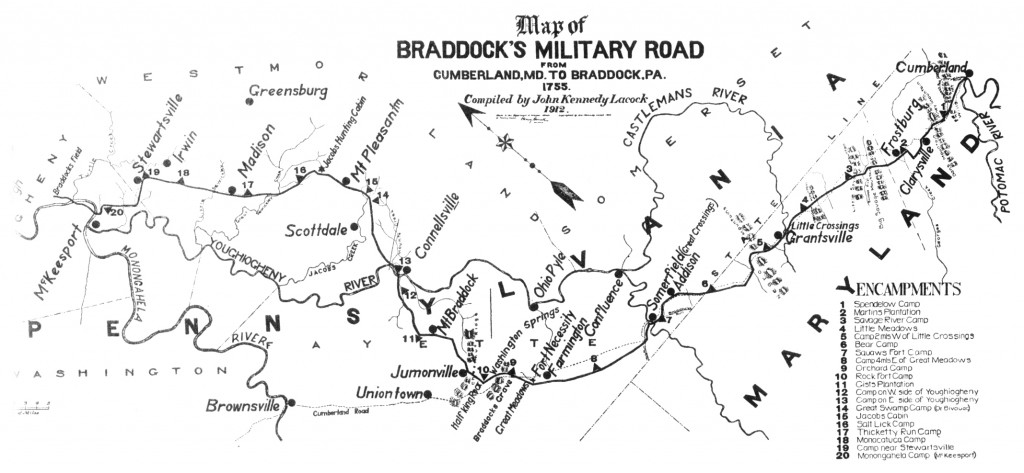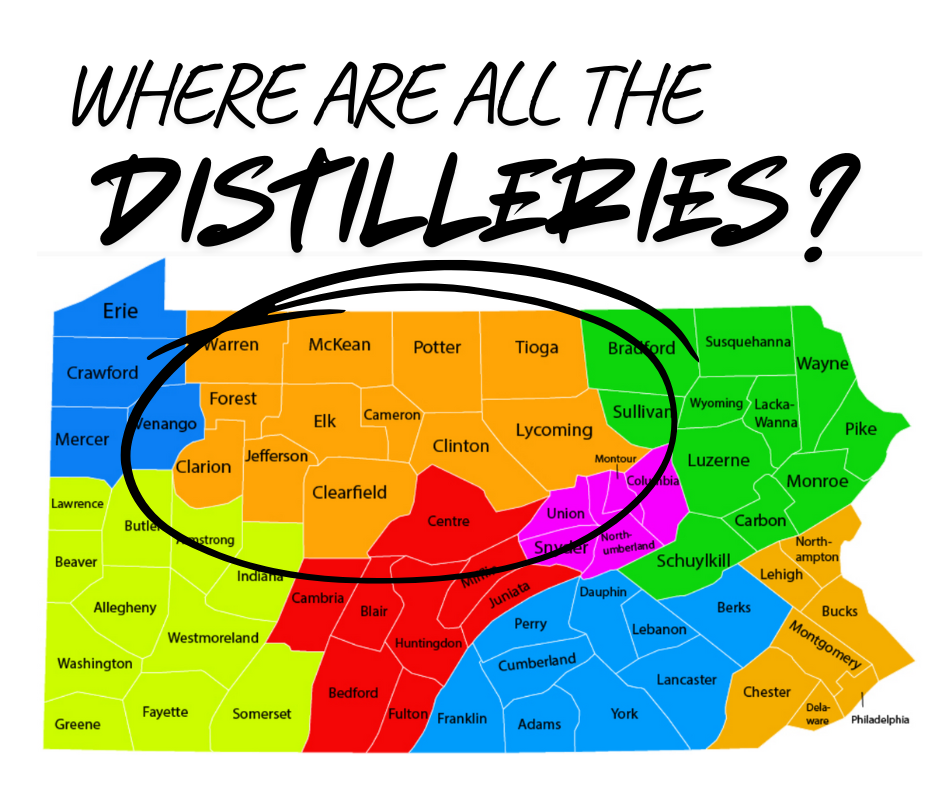I was asked an interesting question recently. “Why weren’t there more distilleries in the north central part of Pennsylvania?” My first thought was- How wonderful that Pennsylvania is beginning to be thought of as more than just the Monongahela Valley when it comes to whiskey production! After all, the state of Pennsylvania is made up of 67 counties, each with its own unique history. These northern counties were influenced by so many factors, one major one being that the path of settlement in the commonwealth moved west from the major ports of Philadelphia and Baltimore. Roads west followed old Native American routes like Nemocolin’s Trail or were carved out during military treks by men like Braddock and Forbes. These early roads ran along the southern part of Pennsylvania into the west and helped establish where forts were built and where people could build their homesteads in relative safety. The north was more confined to British and French fur traders.

I’ll digress for a moment to add that only one of Pennsylvania’s borders is a natural border- its eastern border is carved by the Delaware River, but as Pennsylvania expanded west, its north, south, and western borders were only surveyed borders. A surveyed boundary is not a true division. Where a mountain or a river may cause people on either side of it to develop disconnected experiences and lifestyles, there is a great deal of shared connection with the people of neighboring states. Pennsylvania’s famous southern border is also known as the Mason Dixon line- a surveyed line drawn by Charles Mason and Jeremiah Dixon in the 1760s. The reason that the Mason Dixon line only goes about ¾ as far as the modern line is because when the men reached the Iroquois War Path in the western part of the state, the Native population would not allow them to cross that sacred path.

Returning to the north- the people that did settle in the northern part of the state, either coming south from New York or west from the more populated eastern cities were cut from rough cloth. Early on, the fur traders used whiskey to trade with the native people and the effects of all that whiskey are well documented. Addiction and violent behavior were common, and the people loathed the unpredictable dangers that whiskey consumption added to their lives. When the preachers came to the north decrying the evils of alcohol, their sermons were well received. Any distilleries that were making whiskey there (I have found several examples that of distilleries for sale in northern central counties as late as the 1850s) were pushed out of business by local ordinances. The counties voted for temperance through local option laws. Some, like Potter County, were notably stricter than others. Distilling did not disappear, however. It was simply pushed underground and the quality of whiskey that was made available to the public was, unfortunately for the locals, of a much lesser quality. As late as the 1890’s, Potter County’s newspapers complained that the “Potter County Prohibitory Whiskey” being smuggled in was giving citizens delirium tremors and other health complications.
The settling of Pennsylvania took place along the major established turnpike routes and along the railroads as they were built. Distilleries need transportation routes to flourish, so the north was largely excluded as the distilling industry boomed elsewhere in the state. It’s interesting to note that today, new distilleries are popping up in the north. Sentiments have changed and a new era has begun for Pennsylvania’s distilling industry. The established norms of the past have been erased and we’re all starting from scratch, it seems. It will be interesting to see what the future brings!


